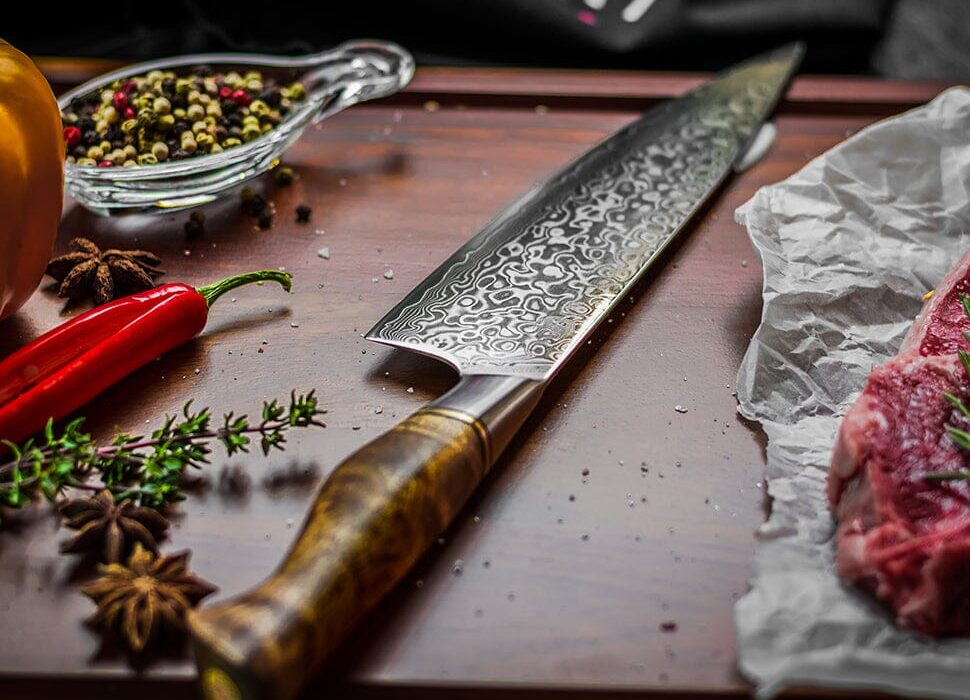The world of cutlery and metals is vast and intriguing, and within it, the ancient technique of creating hand-forged Damascus designs remains a mysterious and revered craft. While known for its stunningly beautiful patterns and impressive durability, few are truly aware of the painstaking process and history behind these timeless creations.
In the heart of any kitchen, particularly among professional chefs and culinary enthusiasts, hand-forged Damascus designs represent more than just a tool; they are a testimony to superb artistry and functionality. From beef shank to lamb preparation, these knives play an essential role.

The Origins of Damascus Steel
The origins of Damascus steel date back to ancient times, most notably to around 300 A.D. in the Middle East. It was commonly used for crafting swords and blades that were not only incredibly strong but also uniquely beautiful due to the patterns formed by the mix of steel types and the distinctive forging process.
What Makes Damascus Steel Unique?
What truly sets Damascus steel apart from other materials is its combination of strength, flexibility, and aesthetic appeal. The blending of soft and hard steel, together with hand-forged techniques, results in blades that resist shattering while maintaining a sharp edge. The pattern is often described as resembling flowing water or intricate waves.
Understanding the Creation Process
The process of creating hand-forged Damascus designs is an intricate affair. It involves layering different metals, often with varying carbon content, and forging them at high temperatures. Each layer contributes to both the durability and the characteristic patterns for which Damascus is renowned.
The Art of Pattern-Welding
Central to the creation of Damascus steel is pattern-welding. This method binds different steels and irons, and through repeated heating and forging, results in the distinctive patterns. The exact recipe and hammering techniques define the final appearance and performance of the knife.
The Benefits of Using Hand-Forged Damascus Blades
Beyond their visual appeal, the benefits for kitchen professionals are numerous. Hand-forged Damascus knives combine sharpness and resilience with the ability to hold an edge longer than other types of blades. They are often preferred for delicate kitchen tasks like stew meat preparation.
Ideal for Professional Chefs
Because of their edge retention and balance, Damascus products are ideal for professional chefs. They ensure precision cuts, which is vital for creating masterpieces in the culinary field. Their balance and weight, along with the grip design, ensure less hand fatigue during prolonged use.
Caring for Your Damascus Knives
To prolong the life and sharpness of Damascus steel knives, proper care is crucial. Avoid putting them in a dishwasher, and always dry them thoroughly after each use. Regular sharpening and oiling are needed to maintain their lustrous appearance and sharpness. More tips can be found in our guide on how to maintain your kitchen tools.
Environmental Considerations
While undeniably sturdy, its essential to handle these works of art with care. Being hand-forged means each knife involves considerable labor, energy, and resources. Choosing sustainably crafted Damascus designs alleviates ethical and environmental concerns, aligning with the growing trend of sustainable practice in various fields.
Exploring Different Damascus Patterns
The range of patterns available in Damascus steel is vast. Experts are continually exploring new designs, with current favorites including ‘Twist’, ‘Raindrop’, and ‘Ladder’. Each pattern not only serves an aesthetic purpose but can also influence the blades cutting performance.
Where to Buy Authentically Hand-Forged Designs
Finding genuine hand-forged Damascus designs can be challenging due to the number of imitations on the market. For those interested, always look for reputable craftsmen or specialized stores. Items crafted by seasoned artisans like those described on Damascus history offer genuine quality compared to mass-produced options.
The Future of Damascus Steel in Kitchens
The intrigue of Damascus steel holds firm in an industry that values tradition fused with technology. Future innovations may include even more refined patterns or enhanced materials that expand on the enduring qualities of this remarkable steel.
Continuing the Legacy
The legacy of Damascus knife designs continues to inspire new generations of craftsmen and chefs alike. Advancements in materials and techniques signal exciting times ahead for fans of these illustrious blades.
Conclusion
In the fast-evolving world of culinary arts, retaining a touch of history and craftsmanship through hand-forged Damascus designs can set any kitchen professional ahead. The blend of aesthetics, durability, and cultural legacy offers substantial advantages that resonate strongly in both everyday and high-end cooking scenarios.

FAQ
What is the origin of Damascus steel?
Damascus steel originated around 300 A.D. especially revered for its strength and distinctly patterned design.
How should I care for my Damascus knives?
To care for Damascus knives, hand wash immediately after use, dry thoroughly, and use mineral oil for maintenance.
What are the most popular Damascus patterns?
Popular Damascus patterns include ‘Twist’, ‘Raindrop’, and ‘Ladder’, each with unique aesthetic and functional properties.
This article contains affiliate links. We may earn a commission at no extra cost to you.


